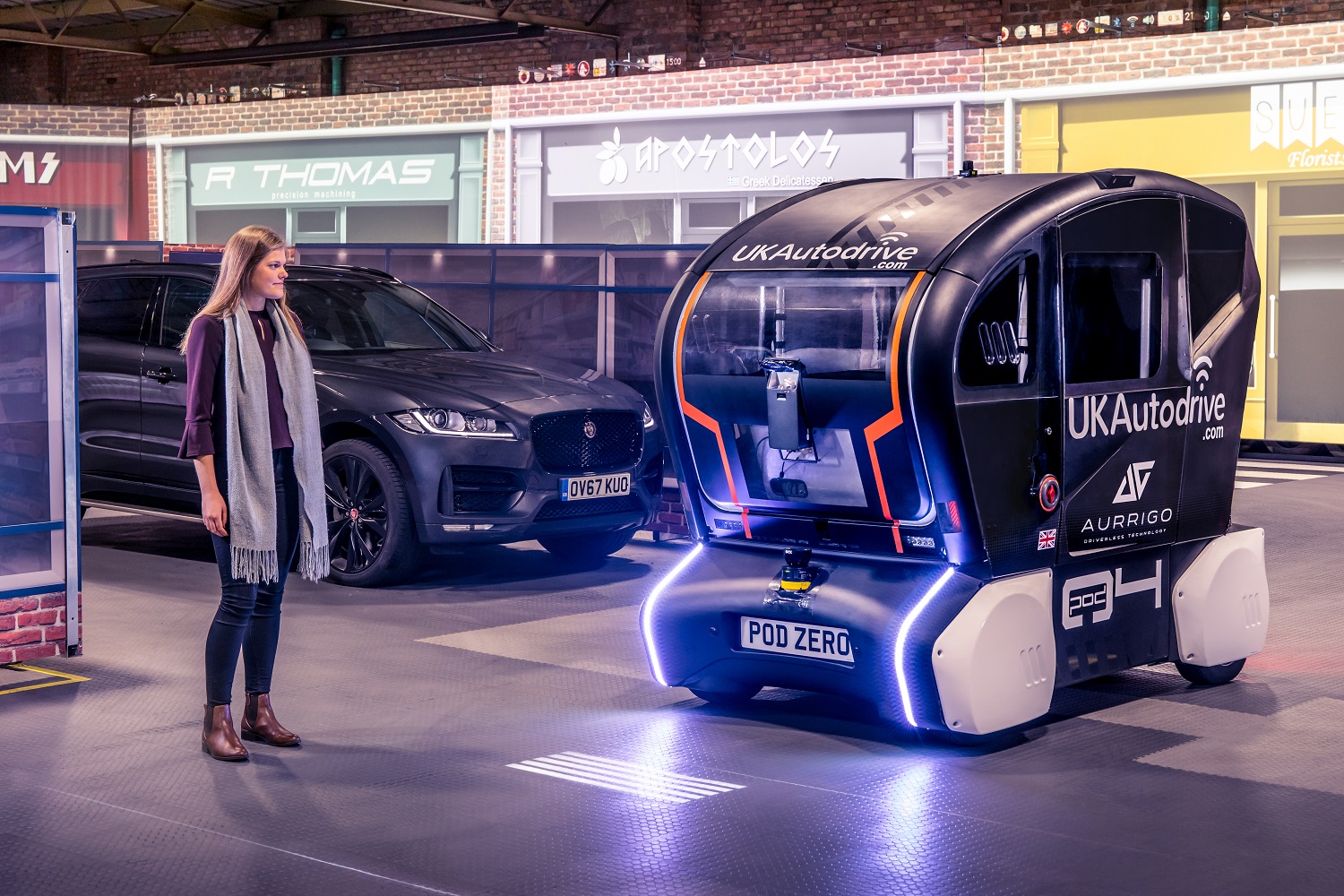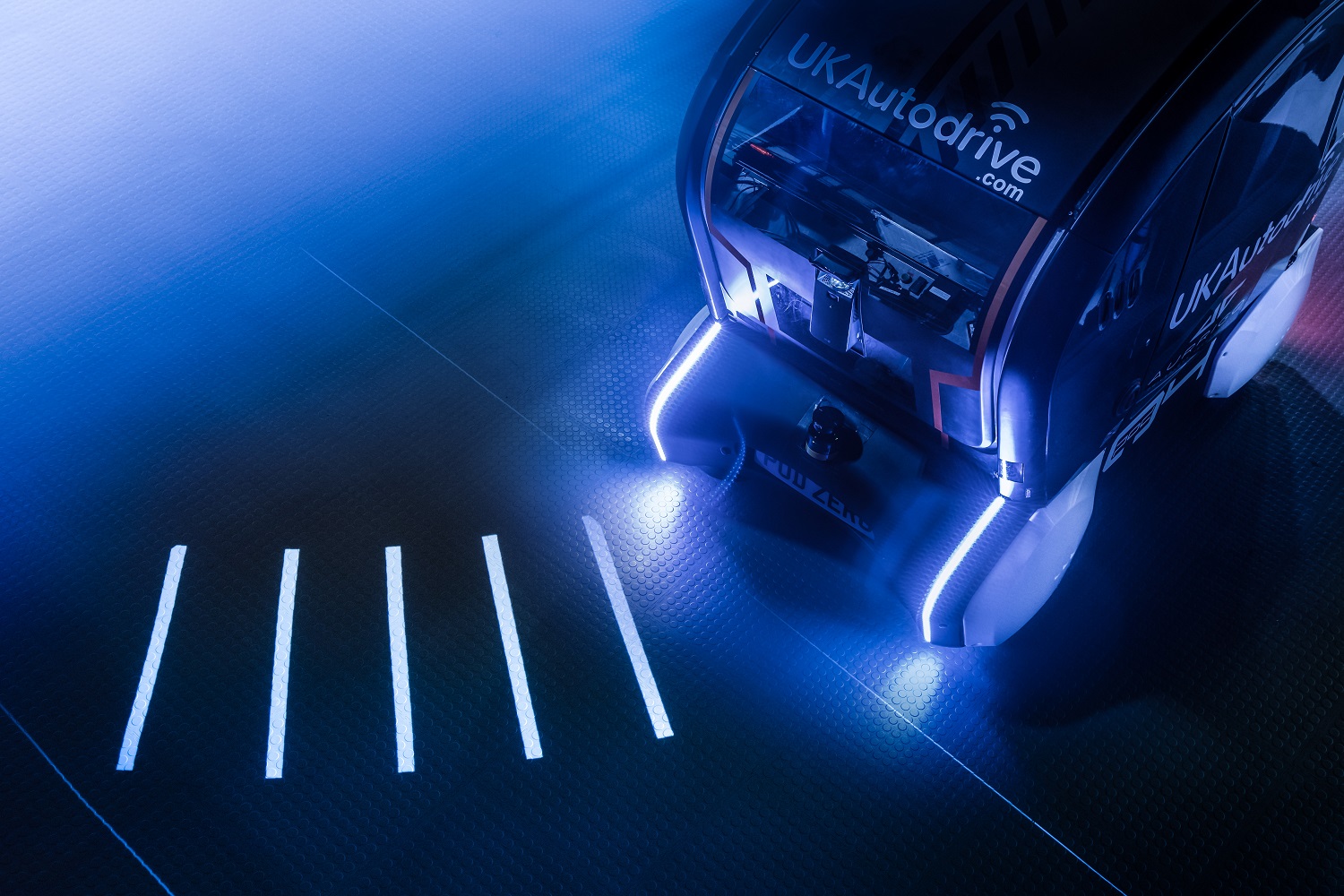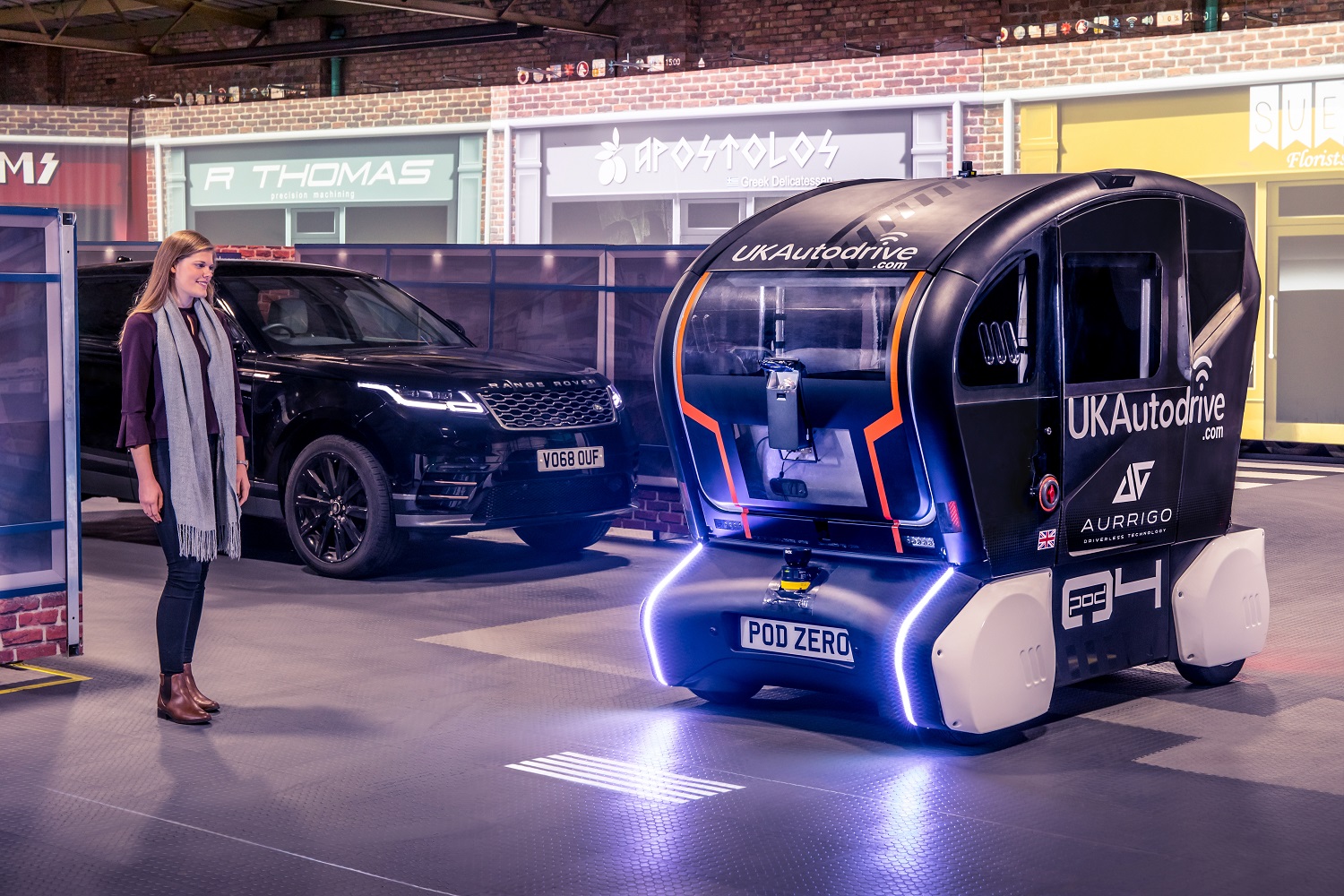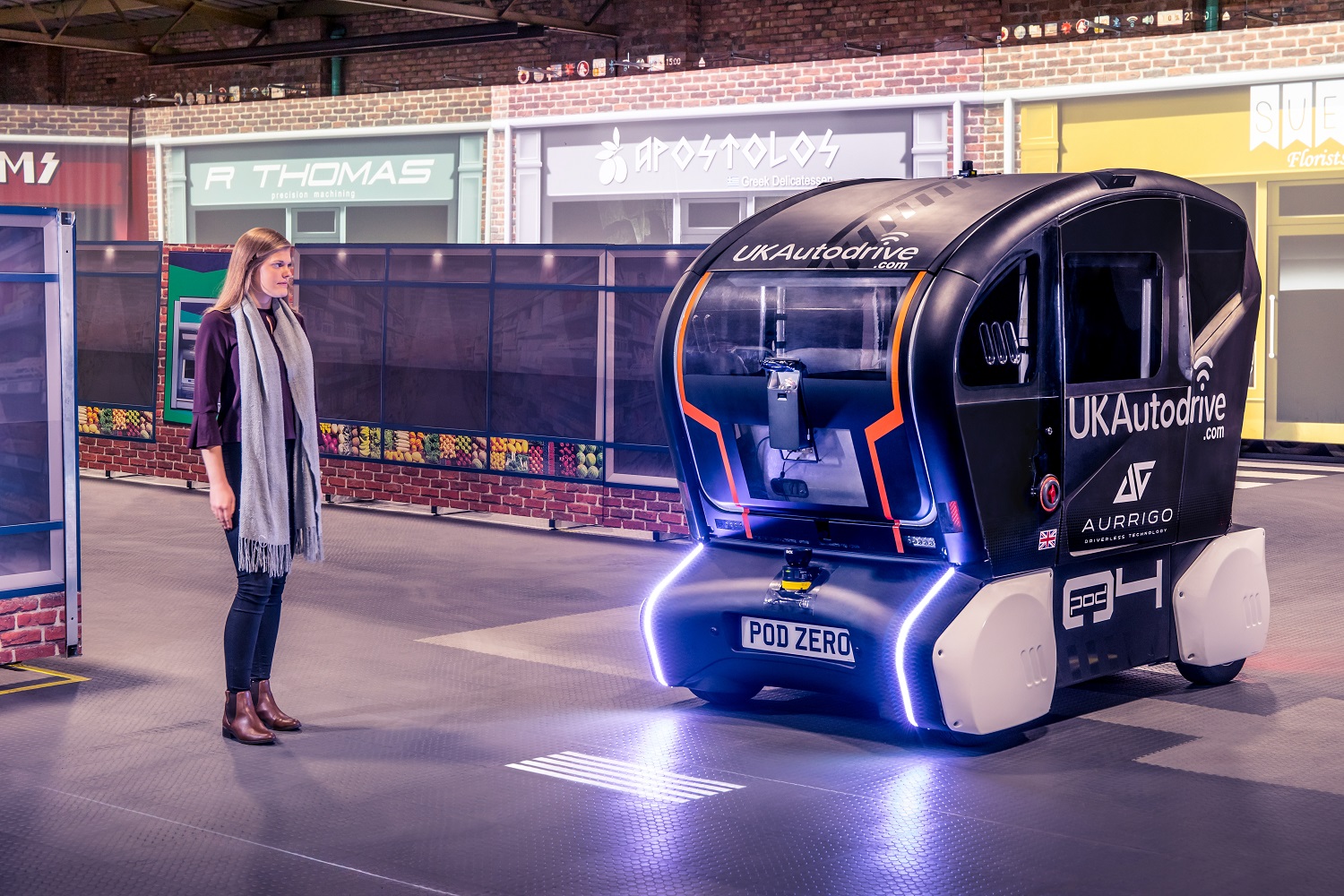Autonomous cars will not be able to use hand gestures to communicate with pedestrians, which could lead to confusing situations at busy intersections. Jaguar Land Rover is working on creating a simple language driverless vehicles can use to tell pedestrians whether they’re stopping, turning, or cruising.
Instead of letters and numbers, the language is made up of a series of light bars projected onto the ground. The amount of space between each car gradually shrinks as the car brakes, and it expands again as it starts accelerating. The bars fan out left or right as the car prepares to turn in either direction. These signals are easy to understand anywhere in the world. It’s a better solution than the truly creepy eyes Jaguar tested in 2018 to allow pedestrians to make eye contact with autonomous cars.
Jaguar stresses this technology remains experimental.
“The trials are about understanding how much information a self-driving vehicle should share with a pedestrian to gain their trust. Just like any new technology, humans have to learn to trust it, and when it comes to autonomous vehicles, pedestrians must have confidence they can cross the road safely,” explained Pete Bennett, the research manager of the firm’s future mobility division.
Fully autonomous cars won’t merge into the mainstream in the near future, so Jaguar still has time to figure out the best way to establish a line of communication between its cars and pedestrians. It’s not alone in this quest. Volvo experimented with similar technology in the past. Its 360c concept emits audible and visual signals to communicate with other cars — whether they’re computer- or human-driven — and pedestrians. It makes its intentions clear without giving orders.
Ford — which, coincidentally, used to own both Jaguar and Volvo — has its own ideas. It teamed up with the Virginia Tech Transportation Institute (VTTI) to create a light bar that allows autonomous cars to communicate with the outside world. Mounted right above the windshield, the bar blinks rapidly to tell onlookers it’s about to accelerate from a full stop. It is a solid white when the car intends to continue on its path, and it flashes when the car is coming to a full stop (e.g., to let a pedestrian cross the road).
Communication is key; without it, pedestrians won’t trust autonomous cars. The efforts demonstrated by Jaguar, Volvo, and Ford suggest standardization is even more important. Nearly 50 different companies sell cars in the United States in 2019, and several major tech companies (such as Waymo) are working on autonomous technology. Imagine having to understand 50 different languages in order to safely cross a street in Manhattan.







